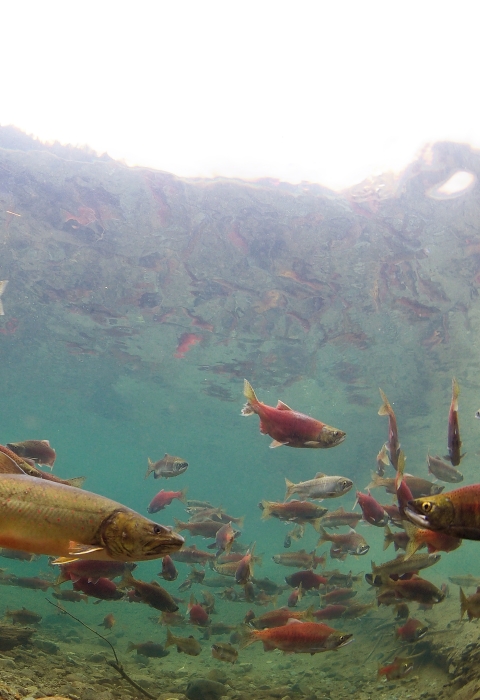Overview
Bull trout have specific habitat requirements that are called the Four Cs; cold, clean, complex, and connected habitats. They are most common in high mountainous areas where snowfields and glaciers are present. They mainly occur in deep pools of large, cold, rivers and lakes.
Scientific Name
Identification Numbers
Characteristics
Physical Characteristics
Common length for the bull trout is 25 inches with the maximum reported length being 40.5 inches.
Adult bull Trout are olive or drab in overall color with pale orange, round spots along their sides
The maximum reported weight of a bull trout is at 31 pounds and 15 ounces.
Migration Behavior
Bull trout are a migratory species. Some bull trout spend their entire lifetime in the same stream, but the majority move to larger bodies of water to overwinter and forage. During the spawning migration, these bull trout move into the smaller streams to build redds and reproduce. Some bull trout are born in fresh water and then migrate to the ocean for their adult lives, then return to fresh water to reproduce.
Life Cycle
Bull trout are a char native to the Pacific Northwest, Alaska, and Canada. Bull trout exhibit one of the most complex life history strategies of the Pacific salmonids. This species exhibits four different life history strategies. These strategies include a non-migratory or resident bull trout form, a riverine or fluvial bull trout form, a lacustrine or adfluvial bull trout form and a rare marine or amphidromous/anadromous form.
Bull trout usually mature between four to seven years of age. An individual may spawn annually or every other year. Typically spawning for bull trout occurs between August and November, but sometimes as late as December. Redds (egg nests) are dug into clean gravel and laid during spawning: females lay an average of 5,000 eggs.
Eggs remain in the gravel for up to 210 days, when bull trout fry emerge. Upon emergence, juvenile bull trout may rear one to four years in their natal (or birth) stream before migrating either to river, lake/river, or nearshore marine areas to mature.
Habitat
Bull trout have specific habitat requirements; cold, clean, complex, and connected habitats. They are native to Canada and the United States.
A variety of activities impact bull trout survival and population recovery. These impacts occur from development or land use that degrades habitat and water quality, barriers to migration such as dams or weirs, and introduction of non-native species that compete for food or eat bull trout.
Geography
The Bull trout is native to Canada and the United States. The geographic range of the bull trout is confined to northwestern North America from Alaska to northern California. These fish inhabit Artic waters, Pacific waters and are usually found in mountain or coastal streams.
Timeline
Explore the information available for this taxon's timeline. You can select an event on the timeline to view more information, or cycle through the content available in the carousel below.
66 Items